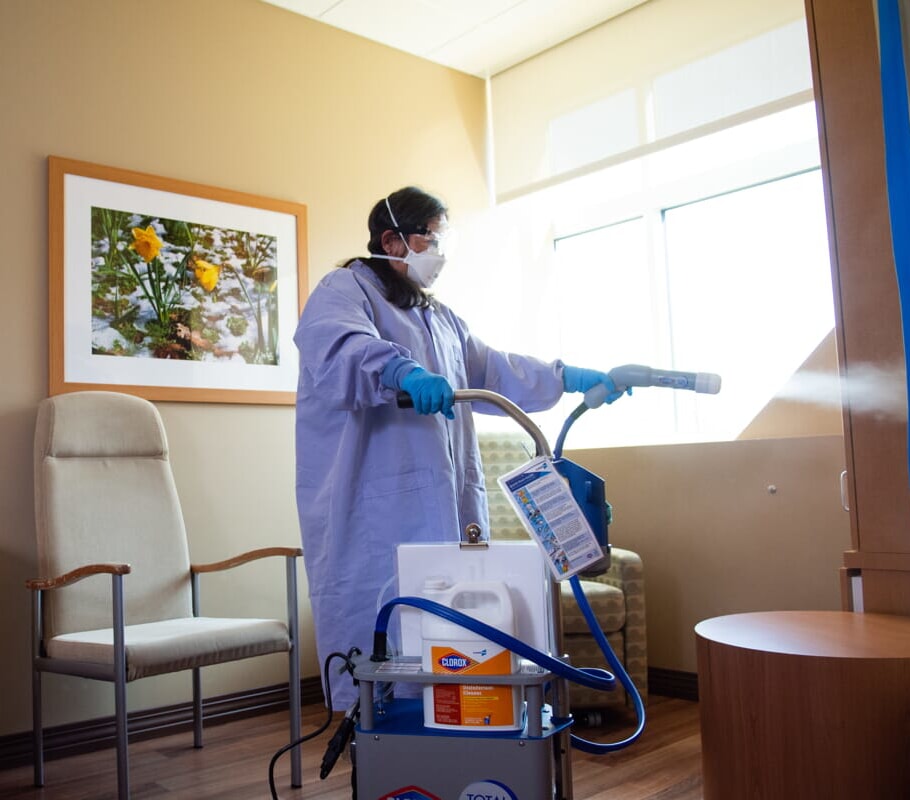NIHD Patient & Visitor Experience
NIHD Visitor Policies due to COVID-19
Originally posted Jan. 13, 2022; updated Feb. 16, 2022
At Northern Inyo Healthcare, our priority is your health and safety. COVID-19 has brought many challenges however we remain committed to providing you with the highest standard of care.
While it is safe to come to Northern Inyo Hospital for your medical needs, we have implemented the following visitor policies to protect you, those who are most vulnerable, and to comply with state public health orders. Due to the ever-changing nature of these orders, please check back frequently for changes.
Everyone who enters the hospital must:
- Be health screened (asked if you have COVID symptoms or had a recent exposure to COVID -- temperatures will NO LONGER be required)
- Wear a well-fitting mask (no gaiters or bandanas please)
Visitors seeking access to the Medical-Surgical, OB, and ICU units must:
- Provide proof of being Fully Vaccinated (defined as 2+ weeks after final COVID vaccine). Proof of vaccination: Card (actual, copy, photo), an approved digital record (QR code), doctor’s record, OR
- NEW: Provide proof of a Negative COVID test collected within three (3) days for a PCR test or one (1) day for an antigen test, OR
- Documentation of positive COVID test within last 90 days with 10 days having passed since the positive test and being asymptomatic.
- Those unable to provide either documentation or negative test results per the state public health order will not be able to enter the Hospital. (If you are unable to provide proof of vaccination or proof of negative testing, please contact our Admissions Team for an alternative option.)
- For those who visit for multiple consecutive days, proof of negative test is only required every third day.
- Note: Exemptions will be made for urgent/necessary/legal visitation (example: End of life, pediatric patients, support person for labor patients, cognitive impairments).
Those coming to NIHD for surgery and other certain procedures may be asked to undergo COVID-19 testing prior to undergoing the procedure.
Testing in Inyo County
- For testing locations in Inyo County: https://www.inyocounty.us/covid-19/testing
- For testing locations in Mono County: https://coronavirus.monocounty.ca.gov/pages/health
Our protocols are based on the following reference sites:
NIHD Visitor Policies due to COVID-19
As of April 14, 2021
Inyo County is in the substantial (red) tier of community transmission per California’s Department of Public Health Blueprint for a Safer Economy.
Northern Inyo Healthcare District will now adhere to the following visitor guidelines while in the substantial (red), moderate (orange), and minimal (yellow) tiers:
- California Department of Public Health (CDPH) recommends that hospitals allow two visitors from the same household at the same time, (provided social distancing can be accomplished) and visitors comply with infection prevention and hospital visitor guidelines.
- Visitors do not need to be designated in advance by the patient.
The following visitation guidelines continue to be recommended by CDPH for specific populations regardless of the county positivity rate.
Pediatric Patients
- Visitors are essential for the mental health of pediatric patients. CDPH recommends that pediatric patients be allowed two support persons at a time.
- In the case of prolonged hospitalization, the facility should permit two designated support persons for pediatric patients.
Labor and Delivery Patients
- The presence of a partner or support person is essential to the mental health of patients who are in labor and delivery. CDPH recommends that up to two support persons be allowed to be present with the patient. In addition to the support person, CDPH recommends that a doula, if desired by the patient, be permitted to be present if prior arrangements have been made with the hospital and the doula complies with hospital PPE and infection control guidelines.
Surgery Patients
- The presence of a visitor is essential to the well-being of surgery patients. CDPH recommends that up to two visitors be permitted until the patient is taken into prep (provided social distancing can be accomplished), and up to two visitors when the patient is in recovery and preparing for discharge.
Patients at End-of-Life
- Visitors are essential to the mental health of patients who are at end-of-life. For their continued mental health, and well-being, CDPH recommends that up to two visitors be allowed to be present with the patient; a single visitor does not need to be designated.
Patients with Physical, Intellectual, and/or Developmental Disabilities and Patients with Cognitive Impairments
- The presence of a support person is essential to patients with physical, intellectual, and/or developmental disabilities and patients with cognitive impairments. CDPH recommends that up to two support persons be allowed to be present with the patient.
- For patients, especially with prolonged hospitalization, the patient or family/patient representative may designate two support persons.
Students Obtaining Clinical Experience
- CDPH supports efforts to ensure that new nurses and other professionals coming into the healthcare workforce are able to obtain necessary clinical experience. CDPH encourages students obtaining their clinical experience be permitted to enter the facility if they meet the CDC guidelines for healthcare workers to maintain the workforce needed during this pandemic.
Further CDPH Recommendations for Visitors
- All visitors and support persons must stay in the patient’s room.
- Visitors and support persons must be screened by the facility upon entry for fever and COVID-19 symptoms, and be asymptomatic for COVID-19 and not be a suspected or recently confirmed case.
- Visitors and support persons must wear a cloth or surgical face mask upon entry and at all times within the facility, and must comply with any health facility instructions on PPE and infection control practices while in the District.
Enhanced Sanitation
- Extra sanitation of all public areas multiple times daily with enhanced chemicals per CDC guidelines.
- Use of electrostatic sprayers.
- Convenient hand sanitizing stations throughout the hospital.